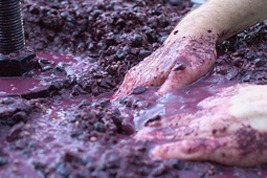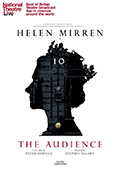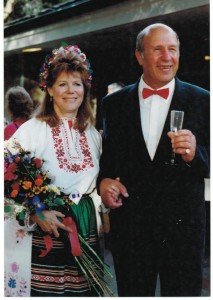Now that I’ve finished the film treatment for “I Love You, California!” I’m moving on to a new, challenging and exciting project. But what happens with the film treatment, you ask? Stuff it in a drawer? Honestly, I’m not sure. I’ve never done anything like that before and so I’m unsure about next steps. I suppose that with luck, we’ll find somebody in the film-making world who thinks we have a great story and will help it get made. This is not the part of the work that appeals to me. I enjoy the research and the writing. In an ideal world, I’d leave every bit of the promotion to others.
Be that as it may, it’s still time to dig in to a new project and let the treatment “ferment.”
Trust the process!
 So the new project: I’ve started the research for a novel that will follow an American family through the 1920’s, 30’s, 40’s and 50’s. For a writer, this 40-year period is particularly juicy. The Roaring 20’s, the Great Depression, World War II, and the McCarthy era, along with the post-war expansion, will comprise building blocks of the story.
So the new project: I’ve started the research for a novel that will follow an American family through the 1920’s, 30’s, 40’s and 50’s. For a writer, this 40-year period is particularly juicy. The Roaring 20’s, the Great Depression, World War II, and the McCarthy era, along with the post-war expansion, will comprise building blocks of the story.
How do I approach a writing project like this? Since I’ve never tackled writing a novel, I’m figuring out what works for me as I go along. There’s a good deal of finding my way by bumping into things and then changing direction. I started out with ideas for a beginning, middle and end. As a playwright, I know that the place to begin should follow an inciting incident. Something has to have happened that sets the play . . . the machine . . . the story . . . in motion. I want to start this novel in much the same way and to that end, I’ve drafted a beginning that, for the moment, I like and that I hope will infuse the story with the energy it needs to keep a reader engaged. Now I’m collecting my characters and working up their life histories.
If you’ve tackled writing a novel, I’d be interested to hear how you got the ball rolling . . .


 expend energy feeling resentful, stressed or conflicted, I let myself enjoy our family and friends and did what needed to be done to insure good summers for our students. In short, I did my best to stay “in the moment” and use whatever downtime I had not to write, but to think about writing. The result: we had a very enjoyable, relaxed summer and, truth be known, I wouldn’t have accomplished much even if I had fretted about it. This way, having thought about it but not having butted my head against a wall, I’m ready to go with a sufficiently clear idea of how to proceed. This summer taught me an important lesson. Now all I have to do is remember it!
expend energy feeling resentful, stressed or conflicted, I let myself enjoy our family and friends and did what needed to be done to insure good summers for our students. In short, I did my best to stay “in the moment” and use whatever downtime I had not to write, but to think about writing. The result: we had a very enjoyable, relaxed summer and, truth be known, I wouldn’t have accomplished much even if I had fretted about it. This way, having thought about it but not having butted my head against a wall, I’m ready to go with a sufficiently clear idea of how to proceed. This summer taught me an important lesson. Now all I have to do is remember it! Rather than bash my head against a wall, I’ve found that it’s better for me to simply stop working on the project that has me frustrated and set it aside to quietly “ferment” while I tackle something else.
Rather than bash my head against a wall, I’ve found that it’s better for me to simply stop working on the project that has me frustrated and set it aside to quietly “ferment” while I tackle something else.



 With seemingly equal ease, she writes about Jamaican immigrants in London; British nobility down on their luck; police inspectors and California surf bums. When I first started to read her, I assumed that George was British since her novels were largely based there and she was on such intimate terms with its landscape, culture and customs. As it turns out, George was born in Ohio, but for most of her life has lived and worked (as a high school English teacher) in California.
With seemingly equal ease, she writes about Jamaican immigrants in London; British nobility down on their luck; police inspectors and California surf bums. When I first started to read her, I assumed that George was British since her novels were largely based there and she was on such intimate terms with its landscape, culture and customs. As it turns out, George was born in Ohio, but for most of her life has lived and worked (as a high school English teacher) in California.  As impressive as her writing so is her productivity. For the most part, these are substantial volumes and yet she has managed to publish one or two almost every year since the late 80’s. If you haven’t read
As impressive as her writing so is her productivity. For the most part, these are substantial volumes and yet she has managed to publish one or two almost every year since the late 80’s. If you haven’t read 